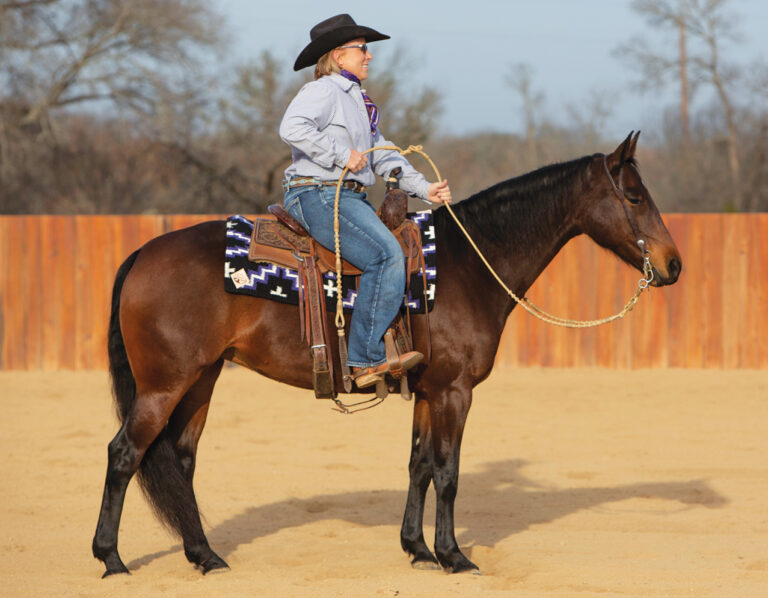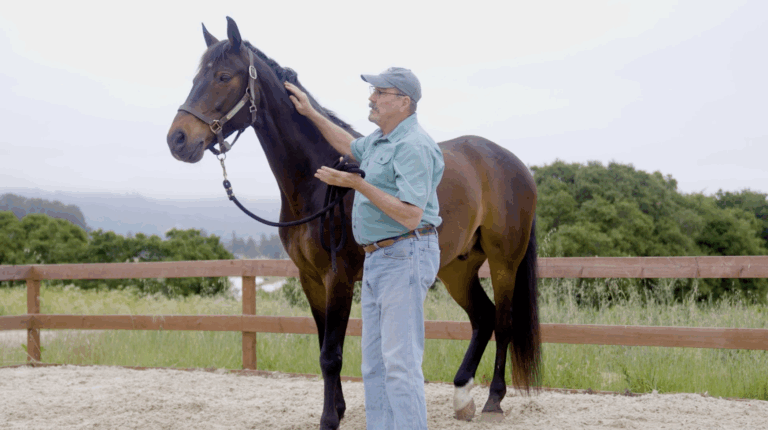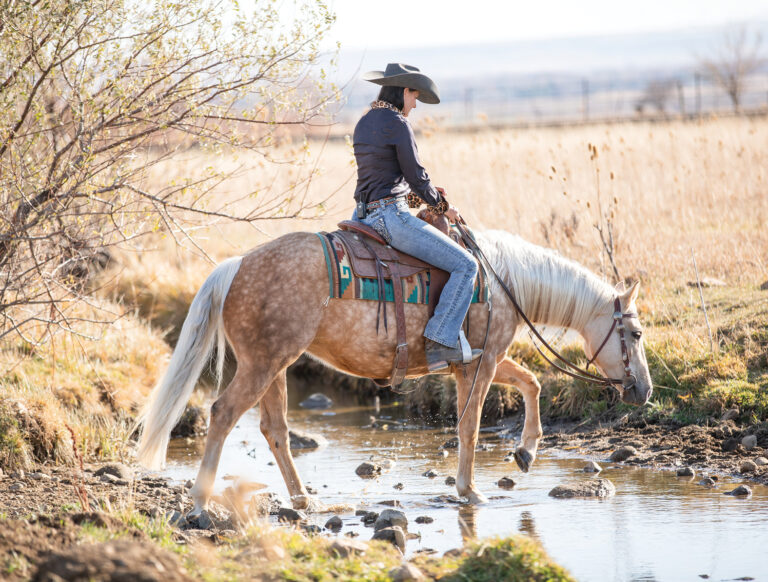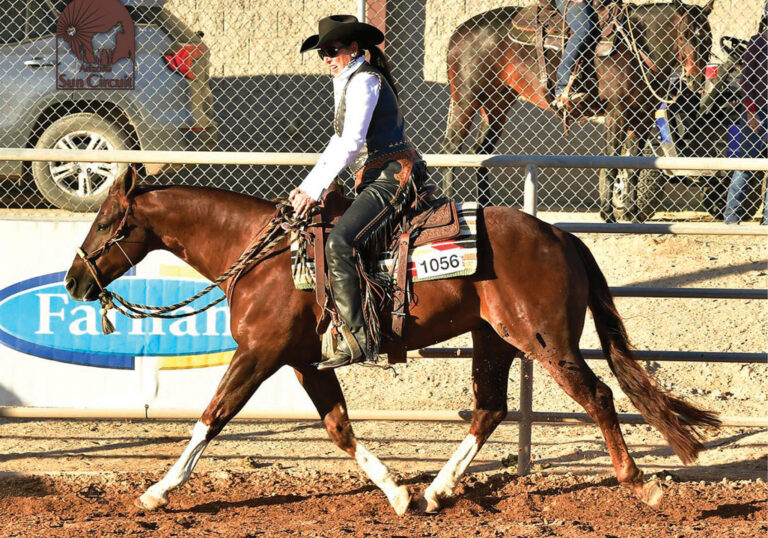Building your confidence in the saddle starts with assessing your strengths and weaknesses. When a particular skill is easy for you, it’s natural to feel more confident. But when a skill is more difficult for you to learn, it’s easy to lack confidence in yourself or your horse. Rather than feeling ashamed or frustrated about your weaknesses, recognize them as some of the greatest opportunities to build your confidence and help you become a better rider.
Think about it this way: it’s human nature to gravitate toward practicing skills we’ve already mastered. When we know we can do something and do it well, we love to do it. It makes us feel confident! And when we struggle to do something, we don’t like to do it. As a result, we never get better. For example, you may be great at loping circles but struggle with flying lead changes. If you spend an hour loping circles and you don’t even attempt to change leads, you didn’t get any better at that maneuver—and you don’t feel any more confident performing them, either. That’s why it’s important to develop a plan for building up your weaknesses and maintaining your strengths so that you can continue to grow.

Make the Plan, Ride the Plan
To start your journey toward becoming more confident, perform an honest self-evaluation of your skills and abilities. Then set realistic expectations for yourself about how to improve. Start by asking these three questions:
- When do I feel the most confident in the saddle?
- When do I feel the least confident in the saddle?
- What do I want to improve about my abilities in the saddle?
If you struggle with self-evaluation, ask your riding coach or a trusted barn buddy to help you answer these questions. By evaluating your riding abilities in this way, you’re recognizing your comfort zone, you’re seeing what’s outside of your comfort zone, and you’re setting goals for how to expand your comfort zone and grow your competence and confidence.
Next, set realistic goals for yourself. For example, if you find yourself in the penalty box on your lead changes in reining, it’s not realistic to set the goal of earning a plus-one-and-a-half at your next show. But it is realistic to set the goal of earning a zero at your next big show. By setting small, incremental goals for yourself, you’re setting yourself up to succeed one step at a time. Just like it takes time to build your physical fitness, it takes time to build your confidence.
[More on Confidence: Control the Lope for Confidence]
Finally, make your plan. When I recognize that I lack confidence in a particular area or skill, I like to design a plan to tackle it head-on. For example, in reined cow horse competition, we perform in three events: reining, herd work, and cow work. I’m most confident while reining, so it would be easy for me to spend three or four days a week reining. But if I did that, I’d never get any better at my herd work or cow work, and I wouldn’t feel confident in two out of three events in my discipline. This year, we’ve developed a schedule in my program. We do herd work on Mondays and Tuesdays; we rein on Wednesdays, and we do cow work on Thursdays and Fridays. By making and riding that plan in my barn, we’re spending more time building my confidence and my competence in those events. I evaluated my strengths and weaknesses; I set realistic, achievable goals; and I made a plan to accomplish them.
Build a Support System
Finding good people to help you achieve your goals is invaluable. If you don’t have a good coach, find one! I am a professional trainer and a multiple world champion, but I reached out to a cutting horse trainer to coach me so that I can get better at cutting. It’s always a good idea to ask for help, especially if you’re struggling with your confidence. If you ride with friends, ask them to keep you accountable to your riding plan—and offer to keep them accountable
to theirs.
In addition to getting external help, recognize that how you speak and think about yourself and your abilities matters, too. If you struggle to lope, it’s easy to think to yourself, “I’m not good at loping. I’m scared of loping. I’ll never be good at loping.” But if you constantly engage in that kind of negative self-talk, it’ll become a self-fulfilling prophecy and your confidence will erode. Instead, tell yourself, “I love to lope. It’s fun to lope. I’m going to keep loping, and eventually, I’ll be very good at loping.” By setting goals, making plans, and giving yourself a more positive outlook, you’re naturally going to become more confident.

Slow and Steady Wins the Race
Just like learning a new skill, building your confidence takes discipline. If you wait to work on a skill until you feel motivated to do it, you’ll never do it. Instead, discipline yourself to work on your goals in small amounts every single day. You’re going to become the most successful at conquering your goals when you break them down into small, bite-sized pieces that you can tackle multiple times a week. That’s one way to encourage yourself in the journey. Another way to encourage yourself is by tracking your progress through technology. Ask a friend to record your rides, or if that’s not possible, invest in a wireless auto-tracking camera assistant for your smartphone that can track and video your rides. By videoing your work, you can watch yourself later to assess what needs work. You can also keep track of your progress throughout the year by recording yourself once per week or once per month. That way, you can see how much you’ve improved over time and build your confidence by seeing your progress.




